We Are So Busy with Our Connections, We’re Alone

When my dad was alive, he was one of those never-connected people.
I offered to get him a computer for his home in the Midwest, pay for the connectivity and even get him some local training. He could get online and “visit the world,” and I could send him a note and we could “talk” when I was working late (two-hour time difference) and just wanted to tell him I was thinking of him.
His response was typical, straightforward, logical, “Got along without a computer before, why now? You want to talk with me, pick up the damn phone!”
He talked with people, wasn’t constantly sneaking a look at the screen he had with him and focused on the person
He didn’t understand the absolute time-saving joy of checking email the minute he got up to wade through 200 emails from Nigeria, award contests, conferences/events, business deals/special offers and others to find the 10 that were from business associates and friends.
He didn’t Tweet, text or post about where he was at and what great things he was doing. Nor did he throw up selfies.
When he was working, he was working and got stuff done. When he wasn’t, he was spending time with folks or just doing nothing.
He didn’t know the thrill of FOMO (fear of missing out), the stress of knowing someone, somewhere might need something done right away and only he could make things right.
According to Nielsen, adults spend an average of five and one-half hours a week on social media, while kids easily double that time.
The American Psychological Association (APA) reported that 43 percent of us (probably low) constantly check our social media accounts, email, texts.
All of that requires that you are constantly being connected, busy doing really important things that causes stress, which only adds to the volume of crap you have to do at the office, at school or at home.
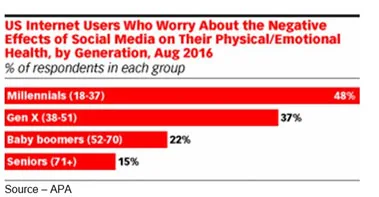
There are a lot of people who think all that connectivity and activity is a good thing.
Back a few years ago, Facebook’s Zuck announced Internet.org with a bunch of infrastructure firms. The goal was simple — connect the remaining two-thirds of the human race, who currently don’t have the Internet, to the Internet.
Then there were the peddlers at MWC (Mobile Wireless Congress) in Barcelona who know how impatient you are for valuable information. To serve up stuff even faster, infrastructure people are busy testing 5G connectivity or lightning-fast wireless capabilities.
The move is supported by all of the smartphone manufacturers, chipmakers, network operators, and government regulators.
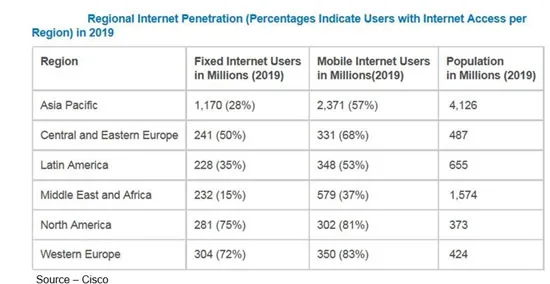
It will take a little time because some areas have zip, zero connectivity and most have “modest” connectivity.
Adoption of the global Internet grows about 10 percent each year. Delivering connectivity to these emerging areas will help expand their businesses and services like health and security.
Oh yes, it will also help the social media-deprived folks.
Is that important? Well, the U.S. the Supreme Court recently ruled that access to social media is a right…not a privilege.
It’s probably right up there with breathing!
The Internet and Web services are critical for millennials and younger folks to communicate.
And they do.
There are about 2.5B digital customers under 25 globally and they’re “always on.”
On average, they spend 315 minutes online each day (126 minutes for 25-plus) and more than two-thirds are on YouTube daily.
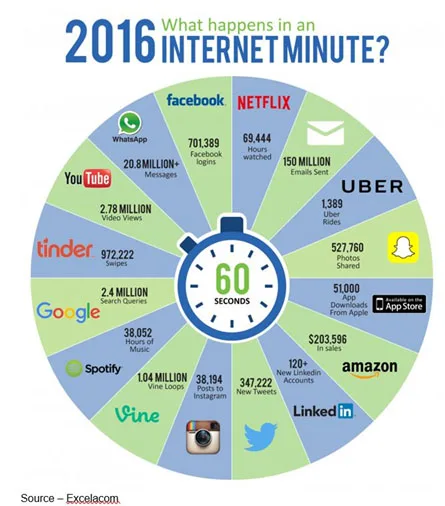
YouTube recently announced that viewers consume more than 1B hours of content…every day.
That’s music to Google’s — and Facebook’s — ears because they can sell ads around all of that important entertainment/”news.”
While people in developing countries are limited to having a phone and maybe a TV, economically advanced countries enjoy the full gamut of communications and entertainment.
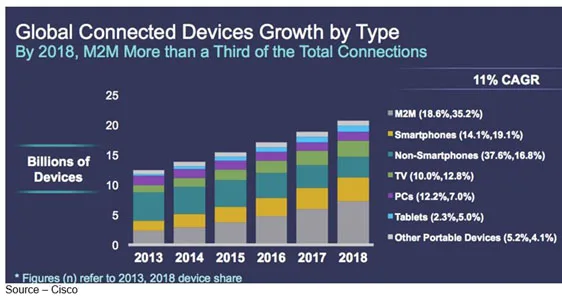
By 2020, Cisco has projected that all of the IP traffic from those connected devices will reach 2.3ZB or 194EB per month.
Of course, not all of that data is business related. In fact, the company estimates that by 2020, 82 percent of consumer traffic will be video.
That’s a lot of video!
Cisco estimates it would take you five million years to watch all of the video that will cross global IP networks each month by 2021.
All of that traffic worries the foundation of global home entertainment – pay, broadcast TV – because they’re being squeezed by social media platforms like Facebook, YouTube and Snapchat on the one side and premium subscription services like Netflix, Amazon and other global streaming services.
The Internet economics are strangling the cable TV business model while the new screens are hampering TV set sales.
The U.S. RECS (Residential Energy Consumption Survey) recently reported that 2.6 percent of homes had no TV at all (earlier surveys were steady at 1.2 percent); and homes with two or more sets dropped from 44 to 39 percent.
At the same time, more subscribers will be signing up for OTT (over-the-top) services, which is attracting new audiences across devices and dayparts.
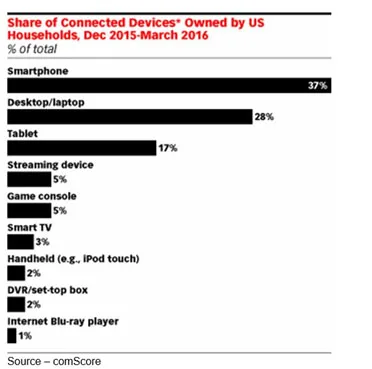
But according to Nielsen, it doesn’t mean the immediate demise of broadcast TV; just that content will streamed during mornings, afternoons, early evenings.
In addition to the connected person, we can’t forget the connected home and car; which are both projected to grow in a huge way.
According to the recent Phenomena global internet report, the average North American household now has over seven active devices in use each day, with 6 per cent of households having more than 15 active devices.
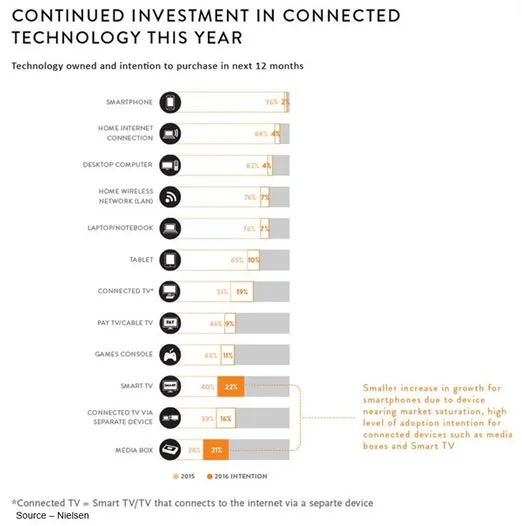
And, they plan to buy more this year.
But the more our technology becomes interconnected, the more likely that the stuff will stop working; and for me, that means I need to reach out to our friendly connectivity person who recently moved to Colorado and hope he can figure it out…remotely.
Before I contact him, I’ll:
- Ignore the problem and hope it goes away
- Reboot everything that’s even remotely related, hoping it will go away
- Marginalize and work around the problem, hoping it will go away
- Figure it’s time to move the stuff to the back bedroom with the rest of the dead gear and upgrade
And it happens at the office also because remember, we’re connected 24×7, which is why the line between work and home has blurred.
Not that the expansion helps people get more real work done; because a lot of time is still consumed by social media…posting, reading, shooting, sending, viewing.
That is a major contributor for the APA’s report that found nearly half of millennials worry about its affect on their physical and mental health.

In their study, every generation said they felt disconnected from their family because of technology, even when they were physically together.
Technology-related stress increases as we spend more time with technology and actually accomplish less.
Maybe dad had the right idea.
I don’t know; but I’d sure like to chat with him again.
 Maybe he’d tell me what Sam Wheat said to Molly, “It’s amazing, Molly. The love inside, you take it with you. See ya.”
Maybe he’d tell me what Sam Wheat said to Molly, “It’s amazing, Molly. The love inside, you take it with you. See ya.”
# # #